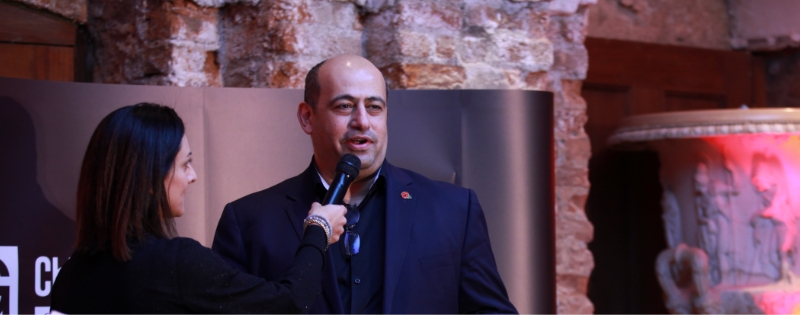Here we go again. Another blog about diversity.
I know what you’re thinking: you’ve heard it all before. Another business journo droning on about the importance of DE&I. Blah, blah, blah.
And I get it. There are loads of similar articles out there. But it’s also true that all too often, we let preconceived ideas and assumptions prevent us from learning something new or trying a different way of doing things. Often we don’t even realize we’re doing it. Unconscious bias rules.
And it’s been an issue in businesses for a long time – especially when it comes to creating and nurturing diversity.
The business case for DE&I
McKinsey research shows that companies with the most ethnically diverse executive teams are 33% more profitable than their peers. Meanwhile a report by Catalyst found that companies with more women in executive positions have a 34% higher return to shareholders than those that do not.
So diversity should be a no-brainer, right?
Well, yes; it should be. Yet despite decades of talk and a number of significant gains, diversity remains something of a work in progress in many organizations.
Look at the IT industry, for example. Recent research from BCS found that just 18% of the UK’s tech workforce come from BAME backgrounds, while women represent just 17% of all IT-related roles – a figure that has risen by a measly single percentage point over the past five years. Clearly, there is work to be done.
So, what is holding us back in terms of achieving more diverse and inclusive workplaces?
More diversity, please
“You get diverse ideas from people with different experiences, different contexts,” says Christy Emma Peel, Director of Security and Compliance at Drager. “If your employees all have similar backgrounds, similar educations, similar degrees and certifications, then that’s when you start to get hive-mind thinking.”
The challenge lies, of course, in breaking out of that cycle of conformity. “If we don’t have a climate where people can come to work and feel able to openly challenge each other – and know that they’re seen, heard and valued – then innovation will be stifled,” adds Melanie Kruger, SVP for Talent at tech firm Red Canary. “It’s not just about diversity; it’s about creating a culture of inclusion that helps everybody bring their best self to work.”
And one of the most common barriers to building a diverse culture is that we are all – to a greater or lesser extent, and for want of a better word – biased. To make matters worse, often we don’t even recognise when we are applying our own preferences and experience onto a particular scenario.
What is unconscious bias?
So-called unconscious biases are attitudes and stereotypes accumulated throughout life that can influence our decision-making.
Whether it’s affinity bias, where we seek out people similar to us; confirmation bias, where we gravitate towards outcomes that fit with preconceived ideas; the halo/horns effect, where we are blinded by either admiration or dislike; or a host of other nuanced partialities, such biases can limit creativity, diversity and inclusivity in the workplace. They can lead to a narrower pool of candidates being hired and promoted. And they can also affect collaboration between employees and prevent innovation and productivity.
“A common theme when I look at project failure is confirmation bias,” says Gordon Bitko, former CIO for the FBI and SVP of Policy at the Information Technology Industry Council. “Great engineers who had good intentions and thought they knew what they were doing, but who didn’t consider the broader implications because they had a narrow mindset. Too often we’re surrounded by people who think like we do – about the product, about the project, about the end goals – and we don’t think about the external forces that might come into play.”
Inclusion through hiring
We naturally gravitate to people like us. So how do we address this unconscious bias at the organizational level? “The hiring process is a perfect example,” says Bitko. “You assume you have a robust process in place. But where are you finding your hires? You’re going to the places you know – to your school, to people who look and think like you – and bringing in more of the same. That’s understandable. But what it does is create homogeneity.”
In many ways, the pandemic may have provided the perfect response to such blinkered thinking. The wholesale shift to remote and distributed ways of working has opened the eyes of corporate hiring managers to the possibilities in recruiting from diverse locations and non-traditional pools of talent.
“If we virtualize hiring to wherever in the world the talent exists, that will go a long way to addressing the challenges we face,” suggests Dr Nida Davis, Director of Security Architecture at Microsoft. “Look at the hacker community, they come from such an amazingly diverse background. A good number of them don’t even have college degrees or any of the certifications we insist upon in our hiring processes. And in many ways those processes preclude us from hiring talent. We need to find the courage to set aside some of those barriers we create for ourselves.”
Change will be critical – because those barriers are preventing us from maximizing our potential. “Unconscious bias is real,” says Peel. “I have two resumés – one where I am Christy, and one where I am Chris, and have removed all references to my gender. And it is amazing how many more call-backs I get when using the latter. It’s only two characters, but the difference is stark. Because despite the fact I have degrees in Maths and Science, the predefined narrative is that women are just not technical enough.”
Driving greater equity
Such attitudes are a damning indictment of the current hiring process at an all-too-large number of firms. But sadly, they’re also deeply ingrained in wider society.
A friend of mine told me an interesting story the other day. Her child’s sixth grade class were asked to draw pictures of different professions. When asked to draw a firefighter, a surgeon and a fighter pilot, the overwhelming majority imagined those roles as men. Yet when asked to draw a nurse, the opposite was true: most pictures showed a woman.
Which suggests these unconscious biases are systemic – and what’s more, that they are imprinted from an early age. We are all of us products of our environment. So isn’t it about time we changed that environment for the better?
“We need diversity of thought. We need lateral thinking. We need fresh perspectives,” says Peel. “And we need to have an inclusive environment where new ideas that challenge accepted orthodoxies can be surfaced without fear of reprisal.”
GDS Summits are tailored three-day virtual event conferences that bring together business leaders and solution providers to accelerate sales cycles, industry conversations and outcomes. Regarding the HR Digital Summit, 88% of delegates said the overall experience of the summit they attended was either above average or excellent, and 100% of delegates said the digital summit provided them with actionable outcomes to support their current initiatives.
Click here to hear from attendees on how GDS has helped them to achieve their business outcomes. Or continue the debate yourself at GDS’ HR Summits, where we bring together senior human resources executives who are actively seeking to share, learn, engage and find the best solutions.












